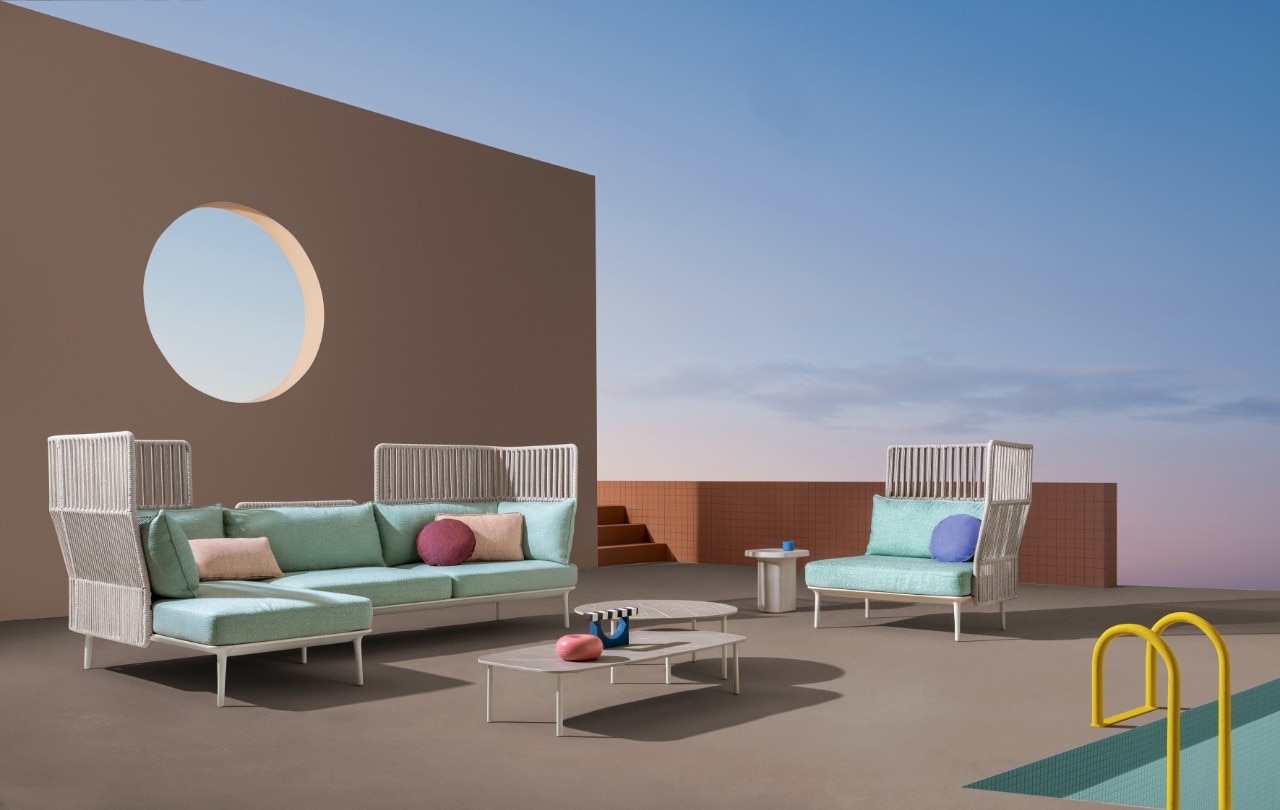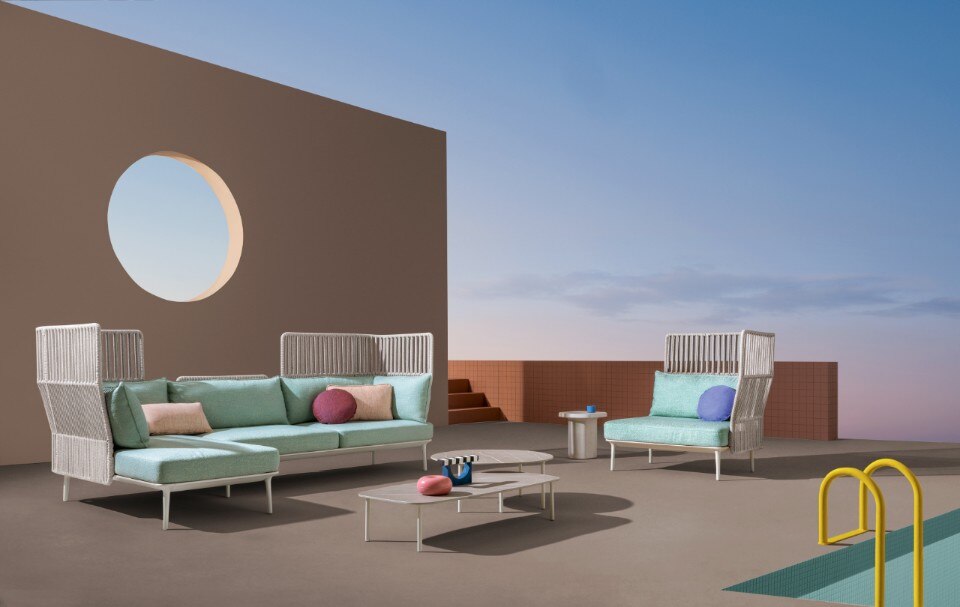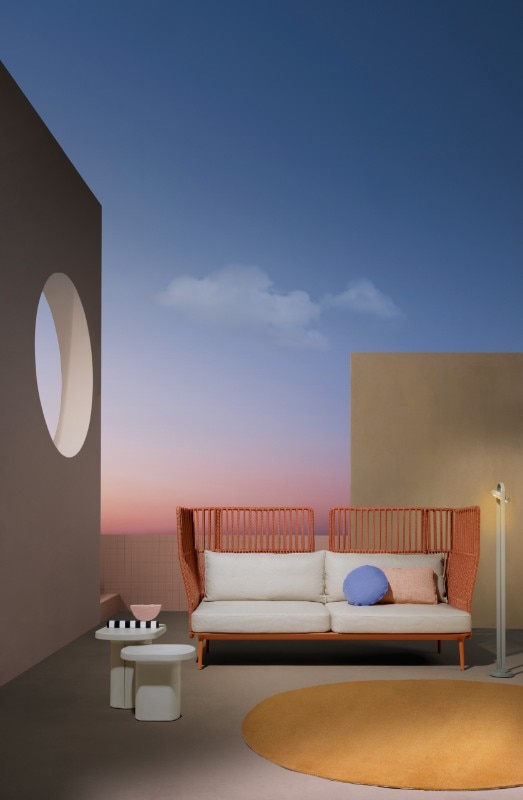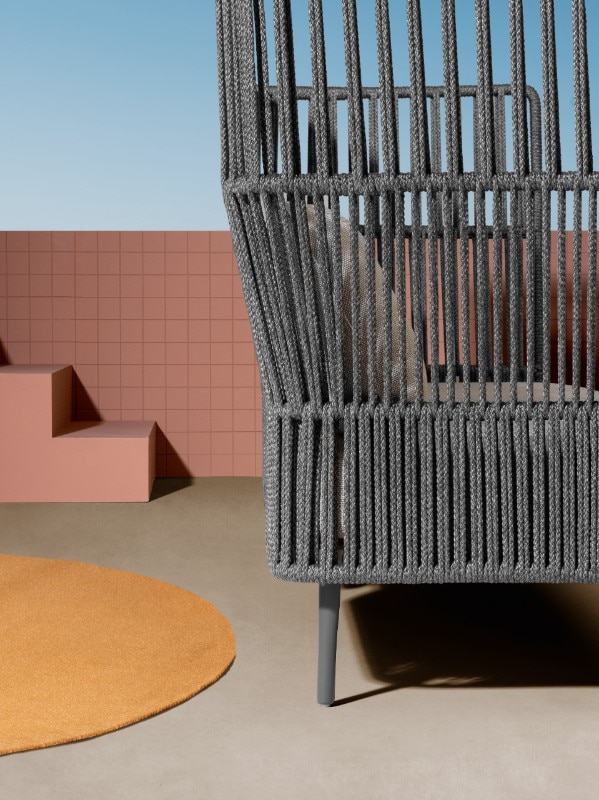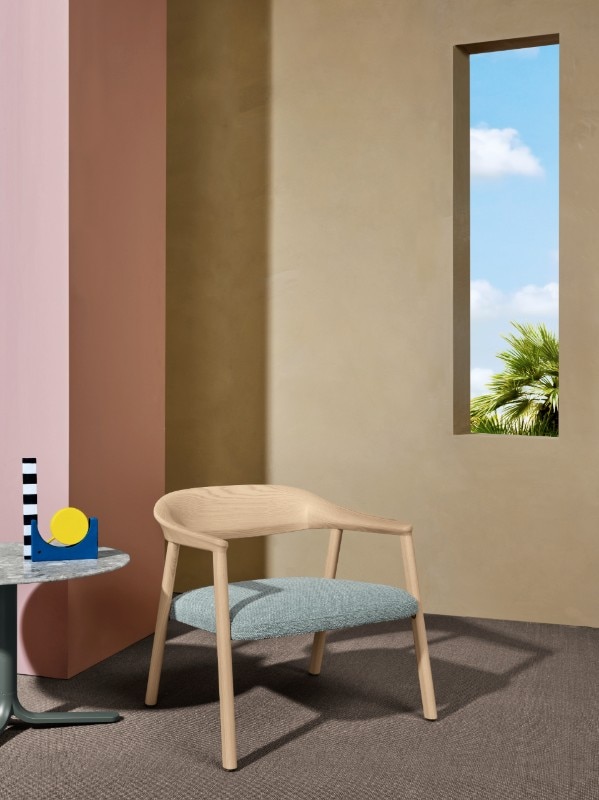The outdoors has become a central theme in design in recent years. The pandemic has led us to rediscover the importance of outdoor spaces, from gardens to balconies and terraces. Pedrali, a company from Bergamo, produces among other things furniture designed for outdoor living, collaborating with leading designers and using materials resistant to atmospheric agents, saltiness and sunlight, to preserve their beauty and quality over time. During the June edition of the Salone del Mobile, in a stand designed by Calvi Brambilla, Pedrali unveiled two new outdoor projects, Reva Cocoon and Héra lounge, created by French designer Patrick Jouin: living life in the open air at its best, with the same degree of comfort as indoor environments.
The theme of outdoor living, as well as the relationship between indoor and outdoor spaces, is becoming increasingly important. How has this space evolved in recent years?
Over the last few years, which have been marked by pandemics and lockdowns, as well as by the inexorable densification of the urban fabric, we have realized that we miss nature and space. Being able to be outdoors is crucial for our mental well-being and for bringing out our best ideas. The pandemic has shown, all the more to those with limited access to it, how essential being outside is for us. This crisis has brought to the fore the inequality in access to green spaces within our society and the disparities between neighbourhoods in terms of quality and upkeep. The relationship with the outdoor spaces has become a crucial issue. Cafés, public gardens, bistros and terraces are spaces that furniture must be able to reclaim. To do so, we expect quality, not necessarily quantity, and we don’t need many elements - just a chair, a small sofa and we are happy.
For me, it is more about a social evolution, a transformation that is happening rapidly, related to climate change and the natural disasters that come with it. But it is also about an ambivalent relationship with nature, which we love but destroy, a vice that speaks of us and should lead us to really think about it.
As a designer, I always strive to create a good product, paying attention to the use of materials. Nowadays we are looking for quality, we need to be outdoors, but whereas before we sat on fragile plastic, today, thanks to new technologies, we bring outdoors the same quality that was once exclusively reserved for indoor spaces. Outdoor products are designed to withstand the weather; they have to be lightweight yet durable.
Speaking of outdoor, you presented the Reva Cocoon collection at the Salone del Mobile. What are the design features that distinguish it?
Reva Cocoon aims to be an island in the garden. This outdoor collection invites you to carve out a relaxing moment on a terrace or by the pool. It offers an openness to the outdoors while remaining airy and letting light filter through.
The weave made of polypropylene rope accentuates the sophistication and almost vegetal character of this collection while guaranteeing durability, sturdiness and resistance to atmospheric agents. Thanks to the large polyurethane foam cushions covered in water-repellent fabric, these furnishings are stain-proof and can be easily cleaned with water.
At the same time, we’ve maintained the characteristic versatility of the Reva collection, as well as the freedom offered by the lightness of its extruded aluminium structure supported at the ends by four tapered die-cast aluminium legs. A truly remarkable lightness.
In addition to this, there is Héra lounge, an indoor seat reminiscent of Héra, designed in 2019. What does designing a chair mean today?
Héra Lounge echoes the silhouette of the Héra chair designed in 2019 and adds a piece to our collaboration with Pedrali in the process of enhancing the value of wood. I believe that wood is the material of the future, because it is one of the very few materials that will always be available.
This armchair is the result of hard work on ergonomics to offer softness in the posture of the back. It takes the same design as the Héra armchair, which is seductive for the simplicity and fluidity of its lines, and responds to a different seating requirement, emphasising the comfort of this collection. What I love in particular is precisely the fact that we managed to make a hard material comfortable.
Is there a common thread that holds these two projects together?
What links these two projects is undoubtedly the fact that the same producer can work with such different materials - it is like having several strings on the same guitar, and this enriches the dialogue. I also think that both of them have a strong symbiosis with craftsmanship. As far as Reva Cocoon is concerned, the knots will never be placed in exactly the same way and this is a subtle difference due to manual intervention, which is further evidence of this quality. Contrary to standard plastic injection, where you cannot distinguish one thing from another, it is undoubtedly also the intervention of people’s hands that unites these designs.
Moving on to the topic of sustainability, how did you approach the use of materials for these two new projects?
Kind of in an opposite way. When it comes to Héra we talk about wood, which is cut, rather than left to rot releasing its carbon dioxide, which we trap inside the chair. Reva Cocoon is an almost “indestructible” object. We paid close attention to the materials: everything can be disassembled without glue, so each element can be separated.


